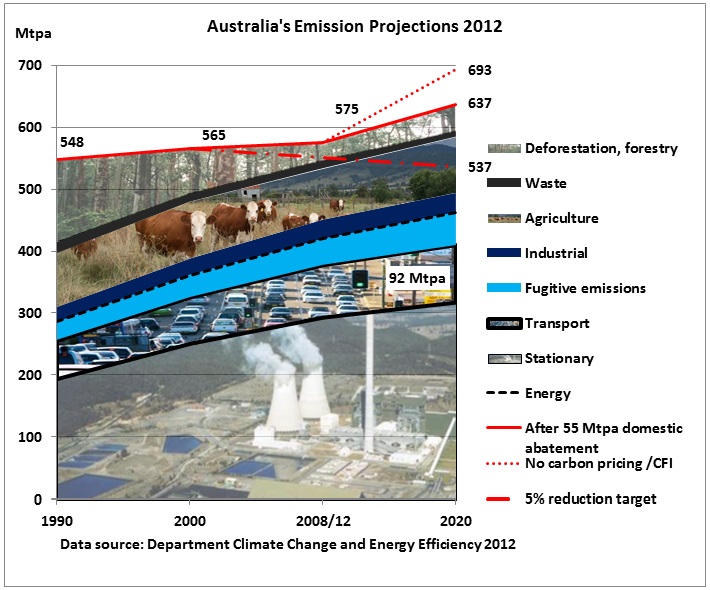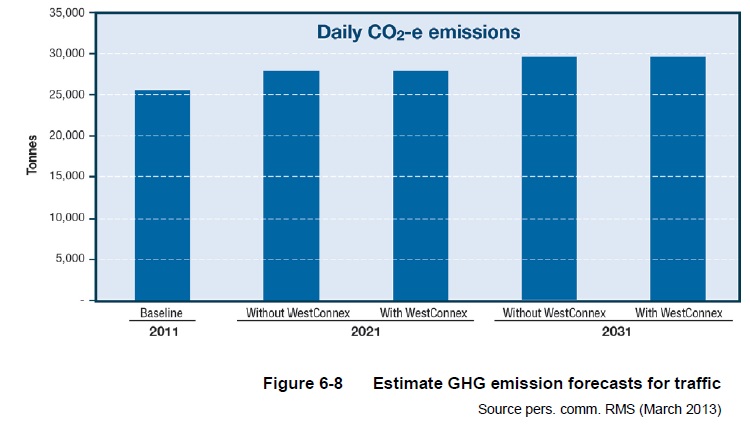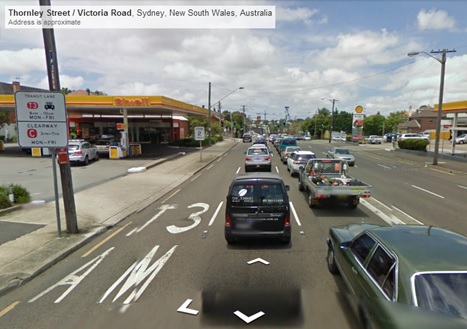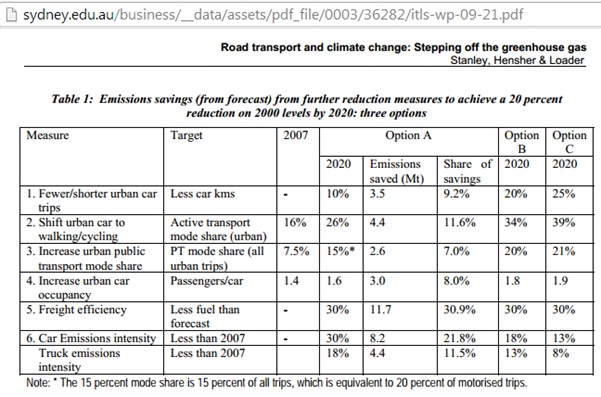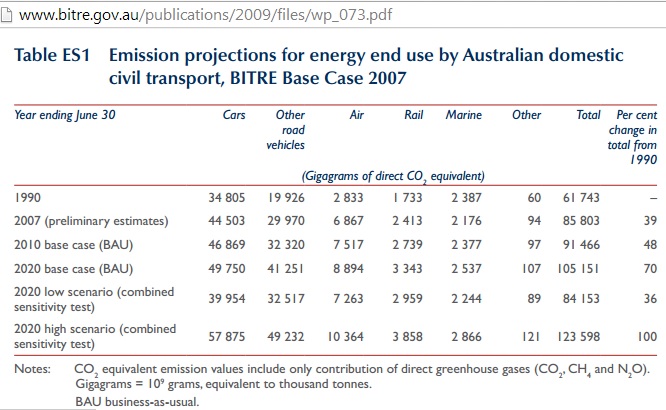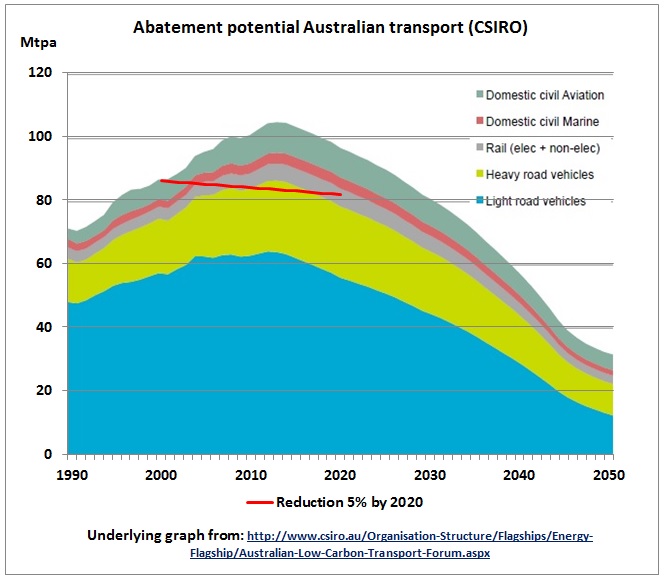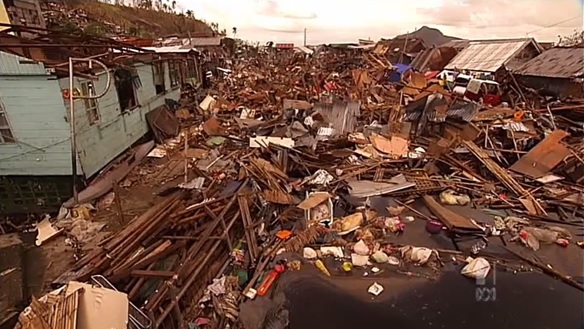The Abbott government invited comments on the operation of the Emissions Reduction Fund with following brief:
The Emissions Reduction Fund is a central element of the Australian Government’s Direct Action Plan. The Fund will be designed to source low-cost emissions reductions, providing incentives for emissions reduction activities across the Australian economy.
http://www.environment.gov.au/emissions-reduction-fund/consultation.html
12/11/2013
ABBOTT: “Australia will meet our 5% emissions reduction target, but this government has made no commitments to go further than that. We certainly are in no way looking to make further binding commitments in the absence of very serious like binding commitments from other countries, and there is no evidence of that.”
http://www.theguardian.com/world/2013/nov/12/abbott-government-abandons-emissions-reduction-target-range
Magnitude of the job to 2020
Data source: Table 1 in: http://www.climatechange.gov.au/sites/climatechange/files/files/climate-change/projections/aep-summary.pdf (captured 18/11/2013)
We can see that annual emissions have grown from 548 Mtpa in 1990 to 575 Mtpa in the Kyoto period 2008-2012. This comparatively modest growth of 5% over 20 years (fulfilling the Kyoto Protocol limits of +8%) was only achieved by forestry management, not a reduction in fossil fuel use.
But for the period to 2020 this one-off reduction in deforestation can no longer be continued and total emissions would grow to 693 Mtpa in 2020 or 20.5% over 10 years.
The previous (Rudd/Gillard) government introduced carbon pricing and together with a carbon Farming Initiative (CFI) emissions were calculated to be reduced domestically to 637 Mtpa by 2020.
A target of 5% reduction on 2000 levels by 2020 would be 95% x 565 Mtpa = 537 Mtpa, 100 Mtpa lower than what is supposed to be domestically achievable. An international carbon pricing mechanism was thought to bring in this 100 Mtpa from overseas abatements.
Note that the emission reduction job compared to business as usual growth is 1-537/693=22.5%. Compared to current levels of 575 Mtpa the 5% target actually means a reduction of 1-537/575=6.6%. By now, there are only 7 years remaining to achieve this. Annual monitoring is needed to measure how far we are away from that 537 Mtpa target.
As an integration into e.g. the European ETS has been abandoned by the Abbott government, who will now buy 100 Mtpa CO2 abatement from overseas?
In any event carbon farming without reducing emissions from fossil fuels will be a Sisyphus job
Rolling carbon abatement up the hill
http://en.wikipedia.org/wiki/Sisyphus
Contrary to earlier quotes of the Environment Minister taken from Wikipedia, in this instance, Wikipedia is a good source to describe what a Sisyphus work is all about.
Westconnex road tunnel CO2 emissions
So let us see how we can bring down fossil fuel emissions. And as the new Australian Prime Minister wants to see himself as an infrastructure PM, proposed road tunnels are a good example.
From: http://www.westconnex.com.au/internal-pages/about/index.html
The proponents of the Westconnex tunnel have calculated that CO2 emissions would remain unchanged. Compared to 2011, Sydney’s traffic emissions in 2021 go up by 8.4% while actually they should go down 6.6%, a difference of 15% in the wrong direction.
The Federal government wants to subsidize Westconnex with $1.5 bn i.e. 5 times the ERF budget of $ 300 million for the 1st year. It does NOT reduce emissions compared to the do-nothing case. It is therefore not a useful project. Direct action makes no sense if the government finances projects in a sector which increases CO2 emissions
The introduction of HOV (high occupancy vehicle) lanes could change that. Care must be taken when designing the number of lanes and ramps to ensure that total VKT does not increase as a result of a road project.
Proposal: instead of wasting $1.5 bn (plus $1.8 bn from the State government) for Westconnex, NSW RMS (Roads and Maritime Services) should calculate which CO2 abatement can be achieved by making T2 and T3 lanes more attractive and maybe compensate motorists for their use.
T3 lane on Victoria Rd not used to capacity.
Governance arrangement: Infrastructure Australia and INSW should update research which was already done, e.g. by ITLS in Sydney, see item 4 in this table:
http://sydney.edu.au/business/__data/assets/pdf_file/0003/36282/itls-wp-09-21.pdf
Monitoring, verification and compliance
Continuing traffic counts are needed to measure the impact of HOV lanes
Auction arrangements
Capital cities have to compete by proposing their HOV projects with the highest reduction in CO2.
Design and operation
Moneys provided by the Emissions Reduction Fund will be used to establish the HOV lanes, mostly line markings, modifications of signage, traffic lights and installation of monitoring equipment. In case license plate recognition can be done, one may even consider to pay motorists for car pooling, a negative toll.
Tollways: tollway operators are interested in maximising traffic to increase their revenue. Car pooling will reduce their income. Therefore, this is a business without future in a carbon constrained world. Tolling per passenger must be introduced to compensate for car-pooling revenue losses .
Fuel prices: higher fuel prices have resulted from the conventional oil peak in 2006/07 and higher production cost of non-conventional oil. The impact from this increase is similar to that from a carbon tax, with the difference that this “tax” is paid to the oil & gas industry, not to the government.
Emission projections by BITRE (from 2009, no further abatement measures)
BITRE’s civil transport emissions in 1990, 61.7 Mtpa, are the same as in table 1 of the Climate Change Department’s document referred to above, but the BITRE base case (105.1 Mtpa) is 5% higher than the unabated projection of DCCEE (92×694/637=100 Mtpa).
It is interesting to see which assumptions went into the low emissions scenario:
The Low combination scenario is the result of running the BITRE emission models using the combination of deviations from each of the preceding sensitivity scenarios that yields the lowest level of aggregate transport emissions (including the effects of low economic growth, low population growth, a higher rate of fuel intensity improvements than the base case, high oil prices and low urban congestion response). The low combination settings gave total 2010 emission levels of around 3.3 per cent below the base case, with total 2020 emission levels around 20.0 per cent lower than the base case.
http://www.bitre.gov.au/publications/2009/files/wp_073.pdf
The BITRE base case is business-as-usual
CSIRO report
Sep 2012
GHG abatement potential of the Australian transport sector
This scenario includes measures to introduce EVs, fuel intensity reductions, biofuels, traffic management, mode shift, urban PT priority, improved logistics, eco-driving, telecommuting, high speed rail (which has now been abandoned by the Abbott government – yet another mistake) i.a. We insert in figure 21, p 39, the 5% reduction curve
We can see that much more has to be done than what the CSIRO proposes.
How urgent all this is may now hopefully dawn on those who “accept the science of climate change” but work on new, fossil fuel dependent projects.
Total destruction by typhoon Haiyan in the Philippines in November 2013. The destructive force of wind increases with the square of the windspeed. If, for example, the average maximum wind speed of a “normal” typhoon was 200 kmh, but is now 300 kmh then that would have increased by 1.5×1.5=2.25. If the 300 kmh wind is the result of global warming then this would have caused 1.25/2.25=55% of the damage
The Australian government should calculate the compensation claims due for this one event.
http://crudeoilpeak.info/compensation-claims-from-global-warming-damage
There are other consequences, too:
Attorney Christina Barroga is exploring how to raise the recent cyclonic event at the International Criminal Court.
You see, for us this a crime – a climate crime – and we will be seeking climate justice.
With this catastrophic reality, human beings here in the Philippines have now become an endangered species.
Rodne Galicha is a district manager in the Philippines for The Climate Reality Project, overseen in Asia by the Australian Conservation Foundation. He is currently based at a disaster relief centre on Romblon, one of the smaller Philippine islands devastated by typhoon Haiyan which tore through the region a week ago.
http://www.smh.com.au/comment/typhoon-haiyan-this-is-a-climate-crime-20131115-2xkif.html
In order to keep within 2 degrees warming, the use of oil must go down by 6% pa already in this decade!
16/5/2013 Half of oil burnable in 2000-2050 to keep us within 2 degrees warming has been used up as we hit 400 ppm
http://crudeoilpeak.info/half-of-oil-burnable-in-2000-2050-to-keep-us-within-2-degrees-warming-has-been-used-up-as-we-hit-400-ppm
Conclusion:
Even a modest reduction of 2000 emissions by 5% in 2020 will be a difficult task. EVERY sector of the economy has to contribute, also the transport sector.
